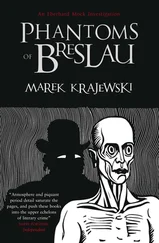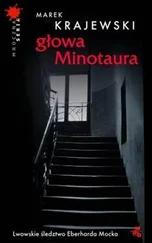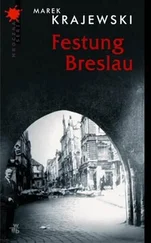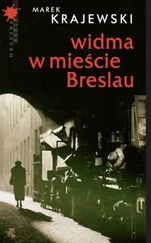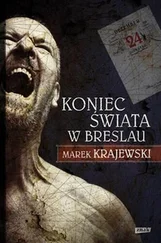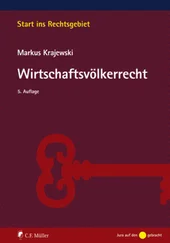Marek Krajewski - Death in Breslau
Здесь есть возможность читать онлайн «Marek Krajewski - Death in Breslau» весь текст электронной книги совершенно бесплатно (целиком полную версию без сокращений). В некоторых случаях можно слушать аудио, скачать через торрент в формате fb2 и присутствует краткое содержание. Жанр: Полицейский детектив, на английском языке. Описание произведения, (предисловие) а так же отзывы посетителей доступны на портале библиотеки ЛибКат.
- Название:Death in Breslau
- Автор:
- Жанр:
- Год:неизвестен
- ISBN:нет данных
- Рейтинг книги:3 / 5. Голосов: 1
-
Избранное:Добавить в избранное
- Отзывы:
-
Ваша оценка:
- 60
- 1
- 2
- 3
- 4
- 5
Death in Breslau: краткое содержание, описание и аннотация
Предлагаем к чтению аннотацию, описание, краткое содержание или предисловие (зависит от того, что написал сам автор книги «Death in Breslau»). Если вы не нашли необходимую информацию о книге — напишите в комментариях, мы постараемся отыскать её.
Death in Breslau — читать онлайн бесплатно полную книгу (весь текст) целиком
Ниже представлен текст книги, разбитый по страницам. Система сохранения места последней прочитанной страницы, позволяет с удобством читать онлайн бесплатно книгу «Death in Breslau», без необходимости каждый раз заново искать на чём Вы остановились. Поставьте закладку, и сможете в любой момент перейти на страницу, на которой закончили чтение.
Интервал:
Закладка:
“Are you going to talk or do you want to lose some more teeth?” asked Anwaldt. “Are you going to talk?”
The prisoner nodded. The rod was removed.
“Kemal Erkin. He came to the Gestapo in order to train. The boss holds him in high esteem. I don’t know any more.”
“Where does he live?”
“I don’t know.”
Mock was certain that Konrad had told them everything. Unfortunately — even too much. Because in the broken, stifled phrase “For you, it’s …” he had touched on the murky secret of Mock’s agreement with Piontek. Luckily, he had only brushed up against it. Mock did not know whether any of the men present could guess the rest of the sentence. He looked at the tired but clearly moved Anwaldt and at Smolorz, calm as usual. (No, they probably haven’t guessed.) Wirth and Zupitza looked at Mock in expectation.
“We won’t get any more out of him, gentlemen.” He got up close to Konrad and gagged him again. “Wirth, there’s to be no trace left of this man, understood? Apart from that, I advise you leave Germany. You were seen in that tavern butchering Schmidt. If you’d acted like professionals and waited for him to go outside, you could safely carry on with your business. But you got carried away. Did you have to deal with him in the tavern? I had no idea you got so violent when someone offers you vodka. Too bad. Tomorrow, when Konrad doesn’t turn up for work … the day after tomorrow at the latest, the entire Gestapo in Breslau will be looking for your distinctive mugs. In three days, they’re going to be looking for you all over Germany. I advise you to leave the country. Go somewhere far away … I consider your debt repaid.”
X
BRESLAU, MONDAY, JULY 16TH, 1934
NINE O’CLOCK IN THE MORNING
Konrad Schmidt’s body had been lying at the bottom of the Oder beyond Hollandwiesen for ten hours already when Mock and Anwaldt lit up their choice Bairam cigars from Przedecki’s and were having their first sip of strong, Arabic coffee. Leo Hartner did not conceal his pleasure. He was sure he was going to surprise and interest his listeners. Pacing his office, he constructed in his mind a plan of how to present his report, appropriately distributing the turning-points, composing apt recapitulations. Seeing that his guests were growing impatient with the prevailing silence, he began his lecture with apparent retardation.
“My dear friends, in his Geschichte der persischen Litteratur Wilhelm Grunhagen mentioned a lost historical work from the fourteenth century describing the Crusades. This work, entitled The War of Allah’s Army against the Infidels , was supposed to have been written by a certain educated Persian, an Ibn Sahim. Gentlemen — ‘So what?’ — you may say. After all, many works have disappeared … here’s … yet another old manuscript … Such disdain would, however, be unfounded. If Ibn Sahim’s work had survived to this day, we would be in possession of yet one more source of the fascinating history of the Crusades, a source all the more interesting in that it was written by a man from the other side of the barricades — a Musulman.”
Mock and Anwaldt lived up to the lecturer’s hopes. The epic delay of the narration did not disconcert either of the would-be Classicists. Hartner was excited. He placed his slim hand on the pile of papers:
“My dear gentlemen, the dream of many an historian and Oriental specialist has been fulfilled. In front of me lies the lost work of Ibn Sahim. Who discovered it? Yes, yes — it was Georg Maass. True enough, I don’t know how he discovered that the manuscript was to be found in the University of Breslau’s library, whether he was the one who found a clue or whether someone gave it to him. And it is not easy to find a manuscript which — as this one is — has been bound with two other, lesser manuscripts. To put it briefly, this discovery will bring Maass world fame … The more so since, working on the piece, he is simultaneously translating it into German. And — this I do have to concede — he is translating faithfully and most beautifully. The photographic prints which you gave me are a literal translation of a very interesting fragment of that chronicle. It speaks of a macabre murder committed in the year 1205 by two men — a Turk and a Crusader — on the children of Al-Shausi, the leader of the Yesidi sect. Those who know the history of the Crusades will be surprised, for in 1205, during the fourth Crusade, the Crusaders did not go beyond Constantinople! But one cannot exclude single sallies of at least a few detachments even into the distant territories of Anatolia or, perhaps, Mesopotamia. These seekers of adventure and riches plundered what they could, sometimes in excellent mutual understanding with the Muslims. The Yesidis frequently became the target of their attacks …”
Anwaldt sat listening, all ears. Mock glanced at his watch and opened his mouth politely to ask Hartner to get to the point. The latter, fortunately, understood his intention:
“Yes, yes, your Excellency, I’m just going to explain who these Yesidis were. This rather secret sect, which came into being in the twelfth century and exists to this day, is commonly considered as being satanic. This is a great simplification. Indeed, the Yesidis do worship Satan, but a Satan that is already being punished for his sins. Despite the punishment, however, he is still omnipotent. They call this god of evil Malek Tau, represent him in the guise of a peacock, and believe that he rules the world with the help of six or seven angels, also represented as iron or bronze peacocks. To put it briefly, the Yesidi religion is a mixture of Islam, Christianity, Judaism and Mazdaism, that is, all the faiths whose representatives crossed the mountains in the centre of Mesopotamia, west of Mosul, leaving behind crumbs of their beliefs. On a day-to-day basis, the Yesidis are a peaceful, honest and clean people — and this the nineteenth-century traveller and archaeologist, Austen Henry Layard, clearly emphasized — who have been persecuted over entire centuries by everyone: the Crusaders, Arabs, Turks and Kurds. So do not be surprised that alliances against the Yesidis were forged even between those who fought each other, such as the Crusaders and the Saracens. For all these persecutors, the cult of the god of evil was a stumbling block which justified the cruellest of slaughters. The decimated Yesidis avenged themselves on their enemies in the same way, passing down the dictates of ancestral revenge from generation to generation. To this day, they live on the borders of Turkey and Persia, retaining their unaltered customs and strange faith …”
“Doctor Hartner,” the impatient Mock could no longer bear it. “What you’re saying is very interesting, but please tell us, does this interesting story from centuries ago — apart from the fact that Maass brought it into the light of day — have any bearing on our case?”
“Yes. A great deal,” Hartner adored surprises. “But let us be precise, gentlemen: it is not Maass who brought this chronicle out into the light of day, but the person who murdered Marietta von der Malten,” he relished the astonished expression of his listeners. “I declare with full responsibility that the writing on the wall of the saloon carriage where that unfortunate girl was found comes from precisely that Persian chronicle. In translation, it reads: ‘And scorpions did in their innards dance’. Keep calm, I will try to answer all of your questions presently … Now I’ll give you one more piece of important information. An anonymous source from the end of the thirteenth century, recorded in the writings of a Frankish chronicler, states that the teenage children of the Yesidi leader, Al-Shausi, were murdered by a ‘German knight’. Only two of our compatriots took part in the fourth Crusade. One of them died in Constantinople. The other was Godfryd von der Malten. Yes, gentlemen, our Baron’s ancestor.”
Читать дальшеИнтервал:
Закладка:
Похожие книги на «Death in Breslau»
Представляем Вашему вниманию похожие книги на «Death in Breslau» списком для выбора. Мы отобрали схожую по названию и смыслу литературу в надежде предоставить читателям больше вариантов отыскать новые, интересные, ещё непрочитанные произведения.
Обсуждение, отзывы о книге «Death in Breslau» и просто собственные мнения читателей. Оставьте ваши комментарии, напишите, что Вы думаете о произведении, его смысле или главных героях. Укажите что конкретно понравилось, а что нет, и почему Вы так считаете.

